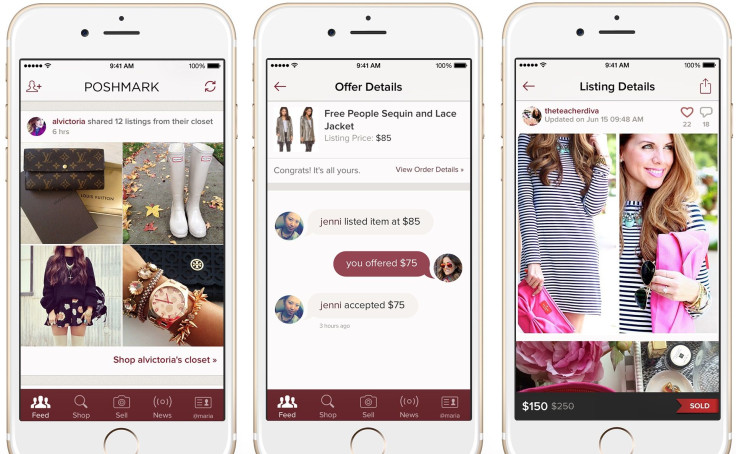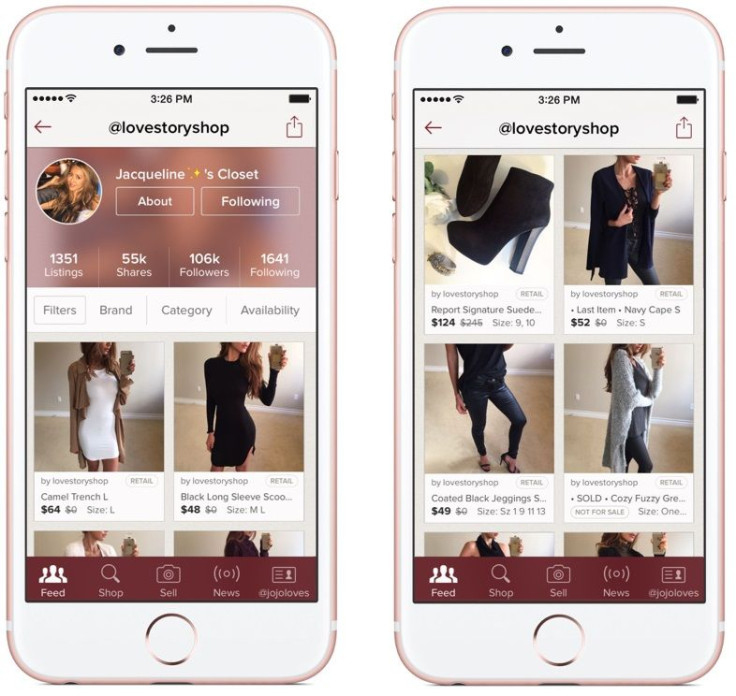Why Poshmark Thinks It's The Top Site For Fashion E-Commerce With Just 1 Million Sellers

Poshmark wants to be the eBay for fashion. The online marketplace is letting its 1 million sellers go beyond selling secondhand clothing items to having direct access to wholesale retailers, the company announced Wednesday. The goal is to make it easier for sellers to run their own online fashion boutiques.
Fashion brands can now sell merchandise to the network of Poshmark sellers by opening up a wholesale store on the site. Logistics including a payment system, shipping and customer service are all done through Poshmark’s backend system. Poshmark’s launch partners include Junk Food Clothing, Shop Jeen, Style Mafia and Snob Essentials.
“We wanted to make it super simple for women to be a fashion seller as well as a fashion stylist using [their] phones. Some were going out of their closets. Others were doing wholesale,” Poshmark CEO Manish Chandra told International Business Times. “What we saw was an opportunity to benefit our shoppers so they could have a much wider product selection and direct, simple access to brands.”
The update furthers Poshmark’s initiative to move the experience of a brick-and-mortar boutique to entirely online. Traditionally, storeowners would visit trade shows, negotiate contracts with wholesale retailers and fax over invoices. Now, Poshmark sellers still have the ability to set their own prices and can negotiate on wholesale buys, but the steps are, for the most part, moved online. Poshmark takes a 20 percent cut in sales.
“It’ll be a lot easier,” said Jacqueline Kirby, a Poshmark seller who has done about $75,000 in sales since launching her store in April 2014. “I dedicate so much time to Poshmark because I’m growing it.” Kirby already works with retailers to stock her inventory and said these new partnerships will allow her to better track and manage her relationships.

Poshmark is also launching an entrepreneur’s fund to support sellers. The company will provide $500 grants to 50 sellers on Poshmark that can be applied to purchasing retail inventory.
‘Uber For Fashion Commerce’
E-commerce is increasingly more of a priority for social networks. Facebook announced in September that 45 million businesses maintain monthly active pages. The company recently redesigned Pages and released new tools such as buy buttons, and also added a Shopping tab to the Facebook mobile app in an effort to get more small businesses online.
“Facebook pages are the mobile-Web presence for small businesses. [We want to help you] be a part of the revolution that is happening in communication,” Facebook COO Sheryl Sandberg said in September.
The competition spurs from other big players besides Facebook. Twitter, Google, Pinterest, Yahoo, Amazon and eBay are also battling for shoppers’ attention as they increasingly leverage more mobile buying and selling options.
Poshmark isn’t worried, though. “Facebook is in its sixth incarnation of e-commerce,” Poshmark CEO Chandra said. “In a way, what we’re doing is providing an Uber-like model for fashion commerce. The platform gives you the trust.” Indeed, sellers like Kirby have moved from running their own Websites to selling solely through Poshmark. Prior, she publicized through Facebook and Instagram, but now can rely on Poshmark's personalized algorithm to attract shoppers to her collections.
Millions of shoppers are hooked to Poshmark. Shoppers spend an average of 25 minutes per day on the Poshmark app and open it between 7 to 8 times daily. For comparison, Facebook users in the United States spend an average of 40 minutes per day on the app. The site has 12 million items per sale from about 5,000 brands. A sale is made every 5 seconds.
Poshmark recently raised $25 million in venture capital funding in a Series C round led by Mayfield, Menlo Ventures, Inventus Capital, Union Grove Venture Partners, Shea Ventures, and SoftTech VC. The company also has a revenue run rate at about $200 million.
© Copyright IBTimes 2024. All rights reserved.












